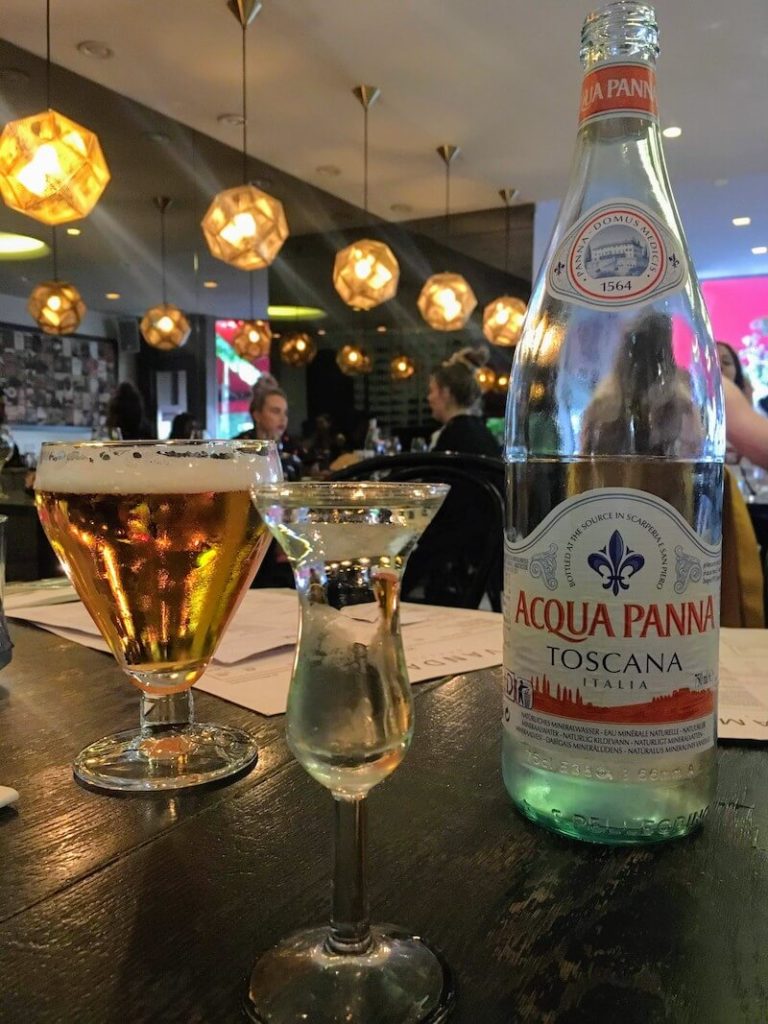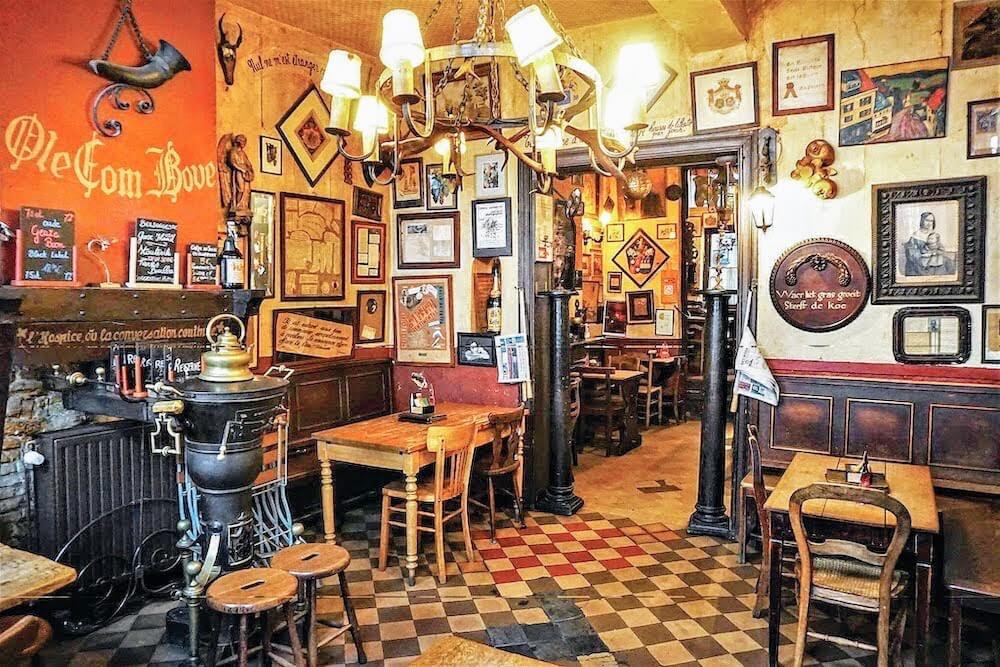Who would have thought the national drink of Holland and Belgium would be so hard to find in their native countries? That’s what Andrew Madigan learned when he tried to order it.
Though relatively unknown in North America, Jenever is a 500-year-old spirit from the Low Countries, and a precursor to modern gin. It was first used as a medicinal tonic, but by the 17th century was more often ordered in taverns than prescribed by physicians. To offset the bitterness, juniper berries and other botanicals were infused into the alcohol.
English forces occupied the Low Countries during the Eighty Years’ War, beginning with the 1587 Siege of Sluis. The soldiers often enjoyed a stiff drink before battle, hence the phrase “Dutch courage.” A few English mercenaries brought jenever back home, which they anglicized to geneva. Later, the name was shortened to gin and became synonymous with England. Nonetheless, jenever is so beloved in its homeland that it’s the national drink of both Holland and Belgium.
In October of each year, the town of Hasselt, Belgium, holds Jenever Feesten, a massive celebration of the drink. Hasselt is a Flemish town in the province of Limburg near the Dutch border. In the center of town there’s a peculiar bronze sculpture, Het Borrelmanneke (the Barrel Man), which depicts a man sitting on the flank of an overturned bull holding a cask of jenever. Water pours from the cask, which serves as a public drinking fountain. During Jenever Feesten, the fountain flows with jenever and the whole town drinks for free – that’s what I call social services. You can ride through Limburg on a jenever trolley, listen to marching bands, visit pop-up bars, or watch local waiters compete in races to win their weight in jenever.
I recently spent a few weeks in Benelux. I’d traveled through the region a few times before and seen all the highlights. There was only one unchecked box on my to-do list – try all the jenever I could find.
My first stop was Van Dam, a laid-back brasserie on the south side of Amsterdam. This is a chic, quiet neighborhood with apartments, schools, a few detached houses, and a strip of bars, shops, cafés and restaurants. There wasn’t a coffee shop, head shop or cannabis mural anywhere in sight.
There was no jenever on the menu but, surprisingly, there was a wide selection of English and American gin. I asked the waitress if they served jenever. “Of course,” she said, looking at me as if I had a head injury.

Van Dam serves jenever but you won’t find it on the menu. You have to ask for it.
The taste was delicious, if strong and slightly peculiar. The sour tang of juniper is less pronounced than in traditional London dry gin. The taste was a hybrid of vodka, gin and tequila, with a hint of absinthe. The botanicals came through strongly, but the finish was smooth and fairly neutral.
If you want to look like a local, or at least not like a total rube, here’s how you drink a shot. It almost always comes in a small tulip-shaped glass. The drink is cold and filled right to the brim. Lean down, sip a little off the top, then pick up the glass and chug the rest.
After my third shot, the jenever tasted more delicious and less peculiar. Though I was feeling less delicious and more peculiar myself. I asked the waitress about jenever cocktails. She shook her head and furrowed her eyebrows, which looked like a couple of terriers wrestling. Her message was clear: we drink it straight –don’t water down our national tipple with Coke or Red Bull.
I sampled dozens of jenevers in Holland and Belgium but, throughout the region, it was much easier to find gin. My hotel bar in Brussels, for example, had 20 scotches, a few rums, a dozen gins, and no jenever. This was the norm. And when I asked for a jenever cocktail, my request was almost always met with raised eyebrows and dismissive hand gestures. I managed to find a few bars that specialized in jenever gimlets or martinis, but this was an anomaly.
One such place was the most intriguing bar in the Low Countries – Le Fleur en Papier Dore in Brussels. This is a 75-year-old tavern that looks it, but in a good way. Dark wood, mismatched tables and chairs, ancient regulars who have their own barstools. Le Fleur was a popular hangout for Belgian artists during the heyday of the surrealist movement. On the walls, hundreds of period artworks, sketches and writings document this history.
Le Fleur was opened by Gerard van Bruaene, an art dealer, actor, writer, anarchist and bon vivant. From 1944-1964 he ran the bar, which was often filled with artist and writer friends such as Magritte, Dotremont and Claus. There’s a quiet garden for the warm days of summer, and a back room that holds 60 people for poetry readings, concerts and other events. Le Fleur is also an ideal place to try local beer and jenever.
There are two major types of jenever – jonge (distilled in a modern style) and oude (the more traditional spirit). While the jonges are clear and more restrained in flavor, oudes have a caramel hue and distinct botanical notes. At Le Fleur, I had my first oude, Bokma Oude Friesche from Holland. It was served at room temperature and had a marked juniper bite with hints of clove and aniseed.
Throughout the region, I learned quite a lot about jenever. You can enjoy it on the rocks, or from a bottle chilled in the freezer. Premium jenever is usually served at room temperature. As with quality sake, it doesn’t need to be heated or cooled to mask the imperfections, because there aren’t any.
For a night of serious drinking, the locals opt for a kopstoot (“headbutt” in English). That’s jenever with a lager on the side. In some parts of southern Holland and northern Belgium, they prefer duikboot (“submarine”), in which jenever is dipped into a beer glass. There are many ways to enjoy the drink, but I rarely saw it on the menu and couldn’t find a single place where jenever cocktails were the norm.
In the end I realized that, whether it’s Belgium or Holland, they don’t need to advertise the national drink. Everyone knows what it is and how good it tastes. They know what brands are available at the local bars and cafes. Jenever is in their blood. It’s what they drink for important holidays and celebrations. Despite an influx of foreign beverages over the past few decades, and fancy new drinks from home, jenever is the drink that tells them who they are. It may not be well known overseas, but that’s just fine with them.
– Andrew Madigan is a freelance writer and novelist. His next book, “Altar Boys,” a YA detective novel, will be published later this year.

